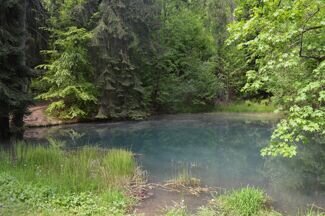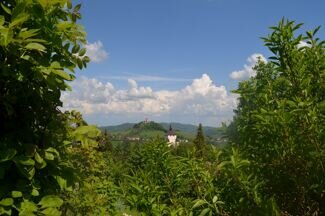The new castle was built between 1564 and 1571 on a hill near the Piarg Gate. The fortress, or watchtower, was named the New Castle in contrast to the Old Castle, which was created from the original medieval parish church. The name "Virgin" (or "Girlish") castle is related to the late Gothic church of Our Lady of the Snows and the Frauenberg hill on which the castle is built.
The fortress was built as a massive prismatic tower, initially with a pair of round cannon bastions on opposite corners, later supplemented with the same bastions on the raised edges of the building. Originally, this object was accessible at floor level by a tilting ramp and has been preserved almost intact. The ground floor has a larger space covered by a cross vault supported by central pillars. The other floors, except for the vaulted rooms in the bastions, have flat wooden ceilings. The solid character of the building is enhanced by the massive semi-circular entrance located on the 1st floor. The fort was later rebuilt so that today it has four floors with embrasures and cannon holes.
The building served the function of a defensive bastion due to its advantageous strategic location and at the same time was part of the signaling system of the Union of Central Slovak Mining Towns. At the same time, it was supposed to prevent the invasion of the Turks into the city with numerous shooting holes. As late as 1848, there were around 21 works on the terrace around the castle. The Turks did not seriously threaten the well-fortified Banská Štiavnica. After the end of the Turkish wars, they stored gunpowder for mining purposes in the New Castle. Later, the fire patrol was located here. Since 1971, the exhibition of the Slovak Mining Museum has been located here, which documents the period of anti-Turkish struggles in Slovakia. The castle has been renovated and is open to the public. From its upper floor there is a nice view of Banská Štiavnica. The expositions show a map of our territory during the Turkish occupation, visual material from the Turkish wars, and on three floors there are still weapons used in those times.
Despite the fact that this object bears the name of a castle, in history it only had the function of a watchtower, the nobility never lived there and it was home only to soldiers who protected Banská Štiavnica from Turkish raids.
GPS: 48.4556599, 18.8946628




































































